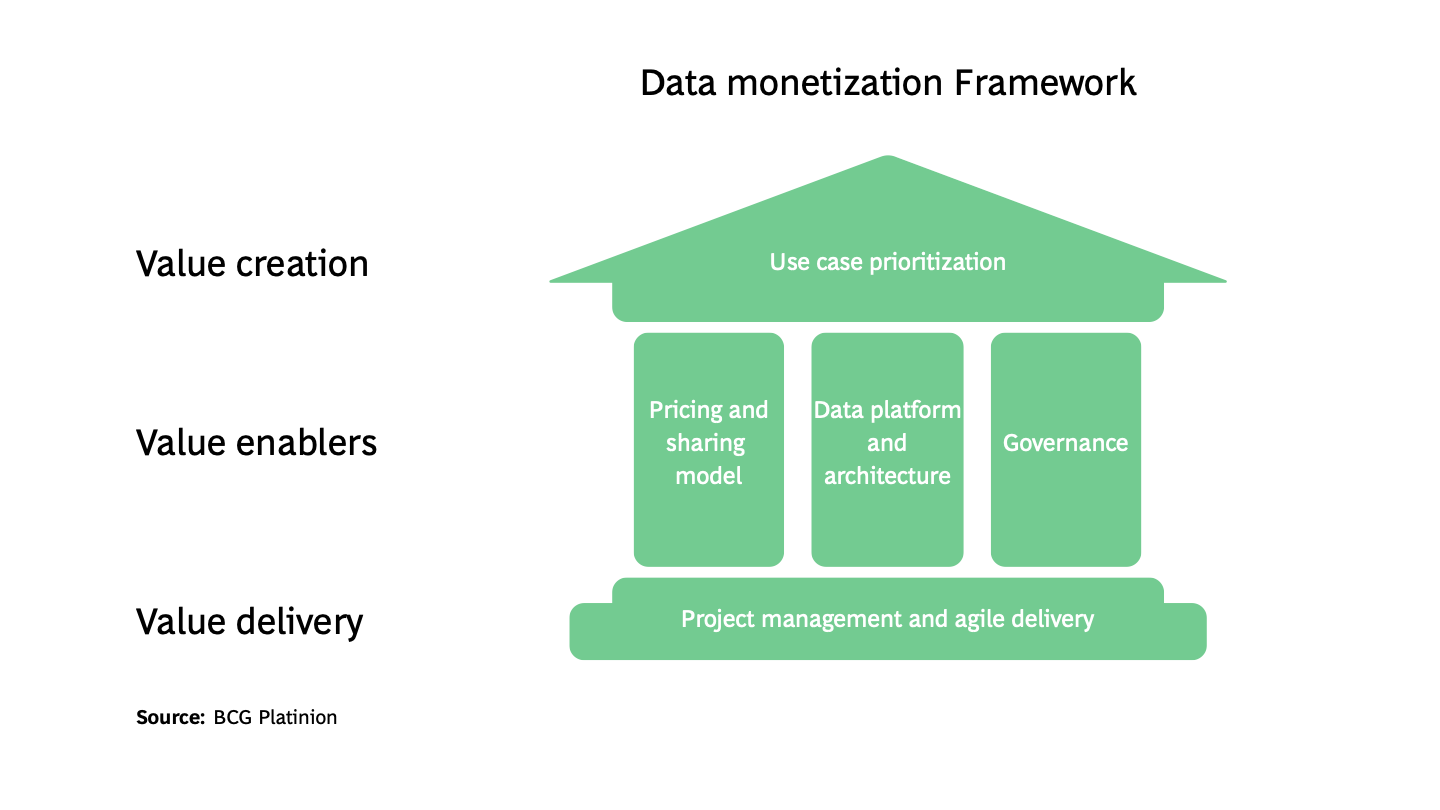This is a draft version! Do not share the link externally!
Ready for Takeoff: The Civil Aviation Data Opportunity in KSA

The goal of Saudi Vision 2030 is national transformation, a comprehensive agenda aimed at public sector modernization, economic diversification, and of course, innovation. Realizing the value of data will be mission critical, and civil aviation is a hotbed of opportunity for the region.



It is theKingdom of Saudi Arabia’s (KSA) goal to triple passenger volumes to 330million annually by 2030, connecting over 250 new destinations along the way. Achieving this requires rich datasets that can be used for personalization, targeted marketing, supply chain efficiency improvements, and predictive maintenance to name a few.
Hyper-personalized offerings alone can generate immense value. For instance, a leading global coffee chain used this approach to generate a 200% increase in net incremental revenue. While this is an example of internal data monetization, whereby companies use data to enhance customer experiences and operations, external monetization selling or licensing data to third parties.
With the National Data Management Office (NDMO)mandating the continuous tracking of top data monetization use cases, it is vital for organizations in KSA to understand and explore the civil aviation data opportunity. Let’s look at what it will take to establish the right capabilities.
Charting a Course
Globally, civil aviation regulators hold substantial volumes of valuable data - from passenger behavior and operational performance to safety records - but many are yet to fully capitalize on this potential. When leveraged effectively, aviation data can fuel innovation, foster strategic partnerships, and unlock new revenue streams.
Here is a step-by-step approach to establishing data monetization capabilities in civil aviation:
- Collect and consolidate comprehensive aviation data, including flight operations, passenger behaviors, and safety metrics - forming the foundation for monetization.
- Define clear roles and responsibilities to ensure data quality, regulatory compliance, and alignment with strategic objectives.
- Establish standardized data management processes, including systematic collection, data cleansing, and transformation, to ensure accuracy and consistency.
- Create tailored data products and analytical insights, such as predictive market analyses, operational dashboards, and safety trend reports, specifically designed to address industry demands.
- Develop a dedicated commercial vehicle, with governance structures to enable secure, compliant, and profitable access to civil aviation data assets within the regulatory framework.
- Identify optimal distribution channels and implement strategic pricing models, designed to maximize value from aviation data products while effectively responding to market needs.
- Launch and scale data monetization initiatives, driving sustained revenue by delivering targeted data solutions directly to industry stakeholders through selected commercial channels.
A Global View
CivilAviation Authorities (CAAs) globally are increasingly leveraging structured data strategies and digital innovations, but their progress in monetization varies significantly.
The UK Civil Aviation Authority is currently at the forefront, having established a dedicated data management unit and mature monetization practices. It effectively utilizes aviation data to enhance operational efficiency, support safety risk assessments, and generate revenue through commercially offered tailored data products and analytical reports, alongside free open-data resources.
.png)
Singapore’s aviation regulator excels at advanced digital applications, notably leveraging digital twin technologies for efficient airport operations. However, Singapore prioritizes open data principles and transparency, opting not to commercialize its data assets directly.
Aviation authorities in the UAE, Turkey, andQatar are making initial strides by developing foundational data infrastructures and analytics capabilities. Despite this progress, their current approaches remain primarily internal, focused on operational efficiency and basic open-data provision without active monetization programs or structured commercial offerings in place.
Facing Headwinds
There are a number of challenges to overcome before the maximum value can be gained from data monetization opportunities in KSA. Given that some of the biggest opportunities are in highly regulated public sector environments, existing hurdles cannot be overlooked.
Regulation and policy are at the top of the list, with data privacy laws in KSA continuing to evolve and mature. Because of this, compliance concerns are a major barrier to data monetization progress, with data sovereignty laws limiting global cloud services and cross-border data sharing.
Legacy, siloed systems are another prime example, many of which come with privacy constraints and unclear ownership. Lack of data visibility and control are especially problematic when it comes to collecting and processing real-time data – a highly desirable information type.
Perception is also a data monetization challenge in KSA, especially in regard to public sector caution –the space where the opportunity is greatest and data is the most underused and undervalued. A widespread shift towards viewing data as a strategic resource, and the monetization of it as a public good, would have a major impact.
Regulatory clarity, improved data infrastructure, and greater trust will all enhance data monetization projects significantly, but more robust governance is a top priority.
The Framework: Three Key Components
Implementing an effective framework ensures your approach is structured, repeatable, and resilient to risk. It defines clear data ownership, helps control access, maintains compliance, promotes accountability, and aligns stakeholders. As a result, continuous improvement and greater scalability are realized.

To effectively unlock the business value from data, organizations must structure their monetization strategy across three key pillars: value creation, value enablers, and value delivery. This integrated framework helps you identify the most impactful use cases for you, the necessary platform and governance foundations, and crucial agile execution capabilities.
Value Creation
Successfully aligning data offerings with demand calls for thorough market testing and evaluation of user needs. In the civil aviation space, this means mapping customer journeys to pinpoint valuable touch points across both passenger and operational lifecycles.
We have seen and worked on a number of civil aviation use cases involving data analytics and AI that stand out:
- DigitalTwin for Fleet Optimization: Create virtual replicas of aircraft to monitor performance, run simulations, and optimize maintenance planning.
- AI Assistant for Fuel Consumption and Route Optimization: Use AI-driven insights to recommend efficient flight paths and reduce fuel costs.
- Training and Knowledge Assistant for Crew Operations: Support ground staff and flight crews with AI-powered training tools and knowledge retrieval systems.
- DemandForecast and Scheduling Optimization: Apply predictive analytics to forecast passenger demand and optimize airport operations scheduling.
- AirsideOperations Monitoring: Combine geospatial and weather data to improve safety, manage turnaround times, and coordinate resources effectively.
By gaining a detailed understanding of each use case in terms of data readiness, ease of implementation, and potential value, you can bring strategic focus to your data monetization approach.
Value Enablers
Identifying opportunities to create value through data monetization is step one, effective enablement is the next. Selecting the correct pricing and sharing model is fundamental to this, with the main options including:
- Usage Model: Users are charged based on the volume of data consumed.
- Subscription Model: Enterprise-wide licensed access to datasets.
- Service Model: Monetization through analytics insights or reporting services.
- Data Sharing Model: Organizations exchange access to their data instead of paying, encouraging ecosystem collaboration.
Organizations will need to establish a suitable data platform and architecture to develop the necessary capabilities and handle data collection. This means building orchestration pipelines and defining data domains across the platform, as well as setting up APIs and connectors (JDBC, ODBC) to streamline access.
Evaluating scalable storage solutions and adopting them ahead of time will prevent operational bottlenecks up ahead, with prime examples including Hadoop, ApacheSpark, and Amazon S3. To support the advanced processing capacity that will be called for, having the right combination of GPUs and TPUs is also a top consideration.
Dashboards and defined data quality rules also help maximize value, with tools likeOneTrust equipping users to have greater control over their information. On the subject of controlling data, no organization can afford to overlook the connection between robust security measures and value enablement.
Finally, governance is another critical value enabler. This will require players to define roles and responsibilities across IT, data and analytics, and business teams – as well as assigning data owners within each business unit. Putting KPIs in place will then help to drive accountability and incentivize data-driven outcomes.
Value Delivery
Sophisticated project management and agile delivery will ensure the implementation process is both iterative and high impact. As part of this, user flows need tobe defined so as to map customer experience across all interactions, and delivery should be continuously optimized based on feedback and evolving priorities.
The Journey: A 30,000ft View
The data monetization roadmap consists of the key activities required to successfully launch and scale a data monetization program. Each step builds upon the last, ensuring strategic alignment, technical readiness, and user adoption.
.png)
Here’s a high-level overview:
- Launch Program: Initiate the data monetization journey with a clear launch plan, vision, and dedicated team.
- Identify Use Cases and Products: Discover high-value, user-centric data products by mapping customer journeys and aligning them with monetization opportunities.
- Define Target Platform: Establish the requiredIT, data, and analytics infrastructure to support secure, scalable, and interoperable data products.
- Program Governance Setup: Define roles, responsibilities, and processes to ensure coordinated ownership and oversight across functions.
- Define Performance Metrics: Set strategic and financial KPIs with real-time monitoring to track success and enable agile optimization.
- Communicate to Users: Execute targeted outreach and onboarding to build awareness, drive adoption, and foster long-term user engagement.
-
Start Your Growth Engines
From smarter urban planning powered by mobility data, to offering fee-based APIs or dashboard to private firms, data monetization use cases are set to have a game-changing impact for the KSA’s aviation sector. Aviation will be a national growth engine of its own, with valuable data from the sector supporting cases like dynamic pricing models for airlines and smart airport logistics.
With the Kingdom of Saudi Arabia’s position on the world stage increasing exponentially, extracting the value from data will be central to its growth strategy. Successful data monetization will ensure the nation is a digitally sovereign, economically diversified global competitor.
Get in touch to find out more about the importance of the right framework!